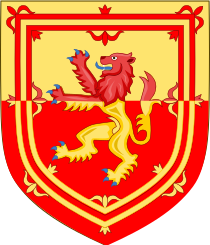John Middleton, 1st Earl of Middleton facts for kids
Quick facts for kids
The Earl of Middleton
|
|
|---|---|

John Middleton, 1st Earl of Middleton
|
|
| Governor of Tangier | |
| In office 1670 to 1672 – 1672 to 1674 |
|
| Governor of Rochester Castle | |
| In office 1663–1668 |
|
| Lord High Commissioner to the Parliament of Scotland | |
| In office 1661–1662 |
|
| Commander in chief Scotland | |
| In office 1646 to 1647 – 1660 to 1663 |
|
| Personal details | |
| Born | 1608 Caldhame, Kincardineshire |
| Died | 3 July 1674 (aged 66) Tangier, Morocco |
| Nationality | Scottish |
| Spouses |
Grizel Durham
(m. 1639–1666)Martha Carey
(m. 1667) |
| Children |
|
| Relatives | John Middleton (great-nephew) |
| Occupation | Soldier |
| Military service | |
| Battles/wars | Thirty Years War Wars of the Three Kingdoms Philiphaugh; Preston; Worcester Glencairn's rising Battle of Dalnaspidal |
John Middleton, 1st Earl of Middleton (born around 1608 – died 3 July 1674) was a skilled soldier from Kincardineshire, Scotland. He started his military career in the Thirty Years War. During the Wars of the Three Kingdoms, he first fought for the Covenanters and Parliamentarians. However, in 1648, he changed sides to support the Royalists.
One of his fellow soldiers in the 1639 to 1640 Bishops' Wars was James Graham, 1st Marquess of Montrose. Montrose later became a Royalist. Even though they had similar backgrounds, Middleton strongly pursued Montrose. There was a strong rivalry between them.
Middleton continued to support the Royalists in the Second English Civil War and the Third English Civil War. He also took part in the 1654 Glencairn's rising, which was not successful. After the Stuart Restoration in 1660, he was rewarded. He became Lord High Commissioner to the Parliament of Scotland. However, he had disagreements with other politicians and was removed from this role in 1663.
King Charles II of England saw Middleton as a capable and trustworthy soldier. So, he gave him two important military jobs. First, he was in charge of Rochester Castle. Then, he became governor of English Tangier, where he died in July 1674.
Contents
Early Life and Family
John Middleton was born around 1608. He was the oldest son of Robert Middleton of Caldhame and Catherine Strachan. His younger brother, Alexander, and his nephew, George, both became the head of King's College, Aberdeen. John Middleton was also the great-uncle of another John Middleton.
A Soldier's Journey
In his younger years, Middleton served as a soldier in France. Later, he fought against King Charles I of England in both England and Scotland. He was especially important in the Battle of Philiphaugh. He also led operations against James Graham, 1st Marquess of Montrose.
Fighting in the Civil Wars
Middleton held a high position in the Engager army. This army fought in the Second English Civil War. He was captured at the Battle of Preston in August 1648. When Charles II of England arrived in Scotland in 1650 to be crowned, Middleton joined him. However, he had a disagreement with the ruling Kirk Party. He was made to apologize publicly in Dundee.
Middleton led the Royalist cavalry at the Battle of Worcester in August 1651. He was captured again but managed to escape to Paris.
Leading a Scottish Uprising
In 1653, Middleton was chosen to lead a planned Scottish uprising. This was known as Glencairn's rising. He arrived in Scotland in February 1654. However, the groups involved were very divided. The revolt ended in defeat at the Battle of Dalnaspidal in July.
He stayed in Scotland until 1655. Then, he rejoined the exiled Royalist court. In 1656, he was given the title of Earl of Middleton. He also received the titles of Lord Clermont and Fettercairn. He became a colonel of a Scottish infantry regiment in the Royalist Army in Exile.
Political Roles
After the Stuart Restoration in May 1660, Middleton was given important roles. He became the commander-in-chief of troops in Scotland. He was also appointed Lord High Commissioner to the Parliament of Scotland. He opened the Parliament in January 1661.
His strong support for the King led to a political struggle. He disagreed with the Earl of Lauderdale. In 1663, he lost his official positions. He then served as Lieutenant-General of the Kent militia. He was also Governor of Rochester Castle from 1663 to 1668.
In 1670, he became governor of English Tangier. This city had become English territory when Charles II married Catherine of Braganza. John Middleton died in Tangier on 3 July 1674.
Family Life
John Middleton first married Grizel Durham in July 1639. She passed away in September 1666. They had five children together:
- Charles Middleton, 2nd Earl of Middleton (born 1649 or 1650 – died 1719). He married Lady Catherine Brudenell and had children.
- Lady Grizel Middleton. She married William Douglas, 9th Earl of Morton. They had one child who died young.
- Lady Helen Middleton. She married Patrick Lyon, 3rd Earl of Strathmore and Kinghorne. They had eight children.
- Two daughters whose names are not known. They both died in 1669 and did not marry or have children.
Middleton's second wife was Lady Martha Carey (born 1635 or 1636 – died 1706). They married on 16 December 1667. She was the daughter of Henry Carey, 2nd Earl of Monmouth. They had two children:
- John Middleton (born 1668 – died 1696). He did not marry or have children.
- Lady Elizabeth Middleton (born 1672 – died 1748). She married William Spelman. They had one child who died young.
See also


